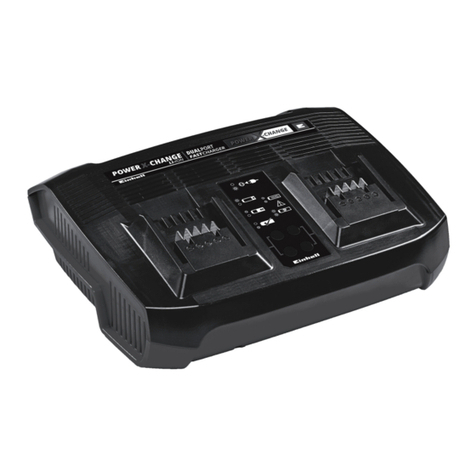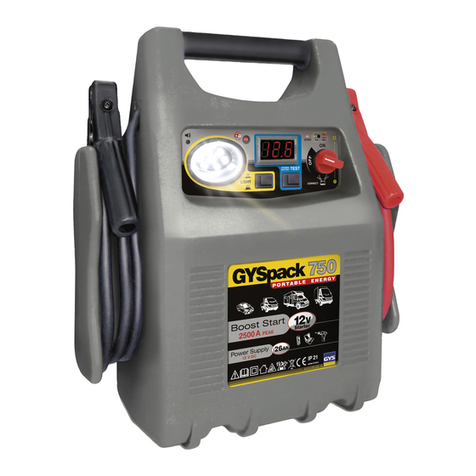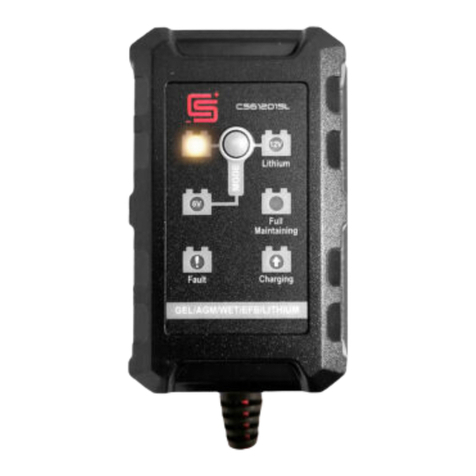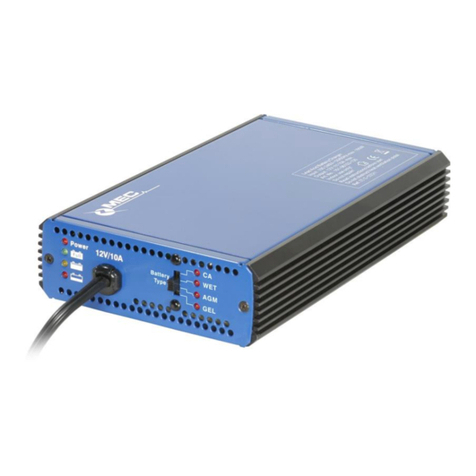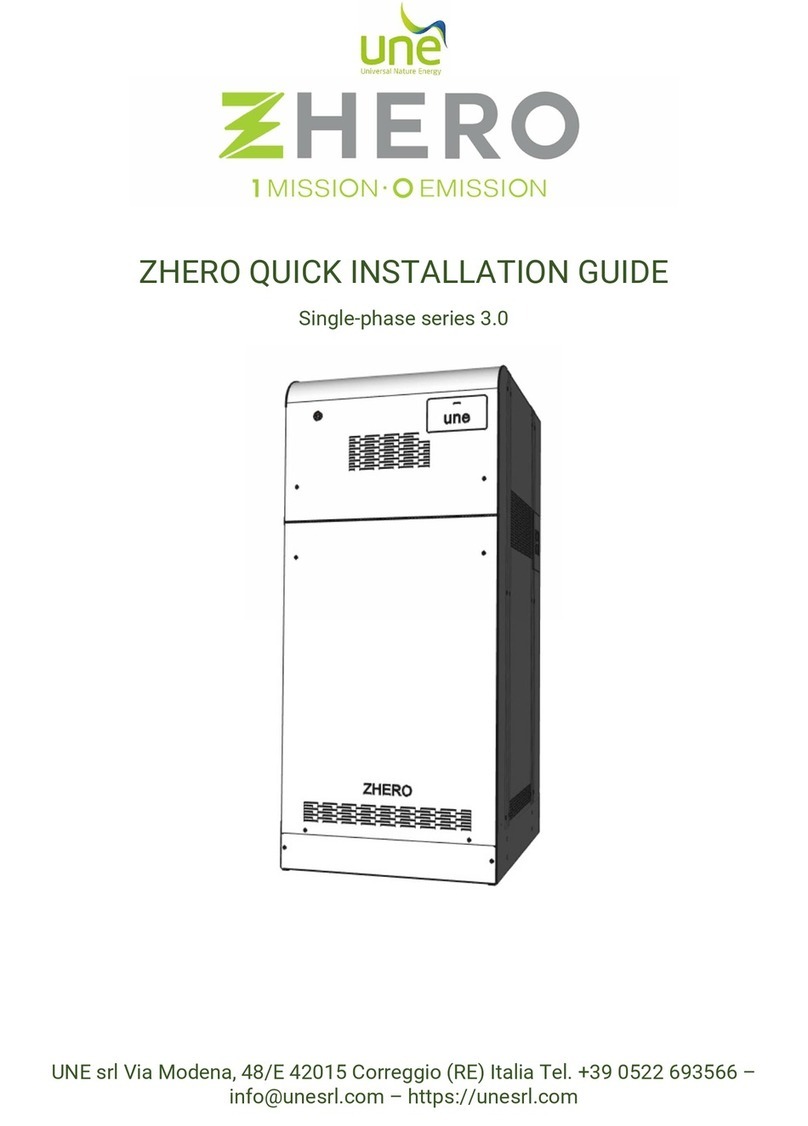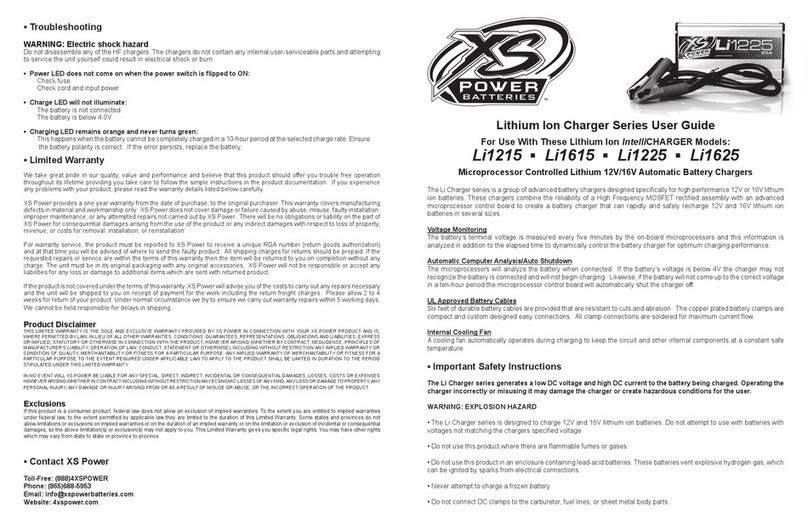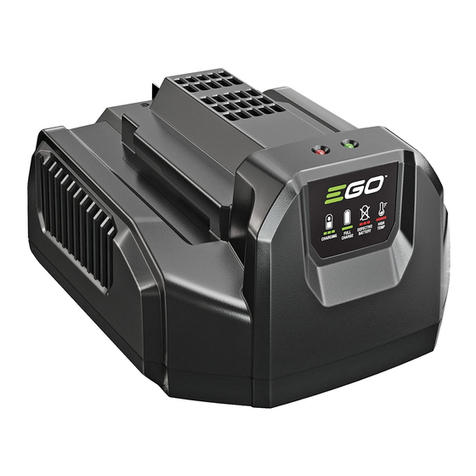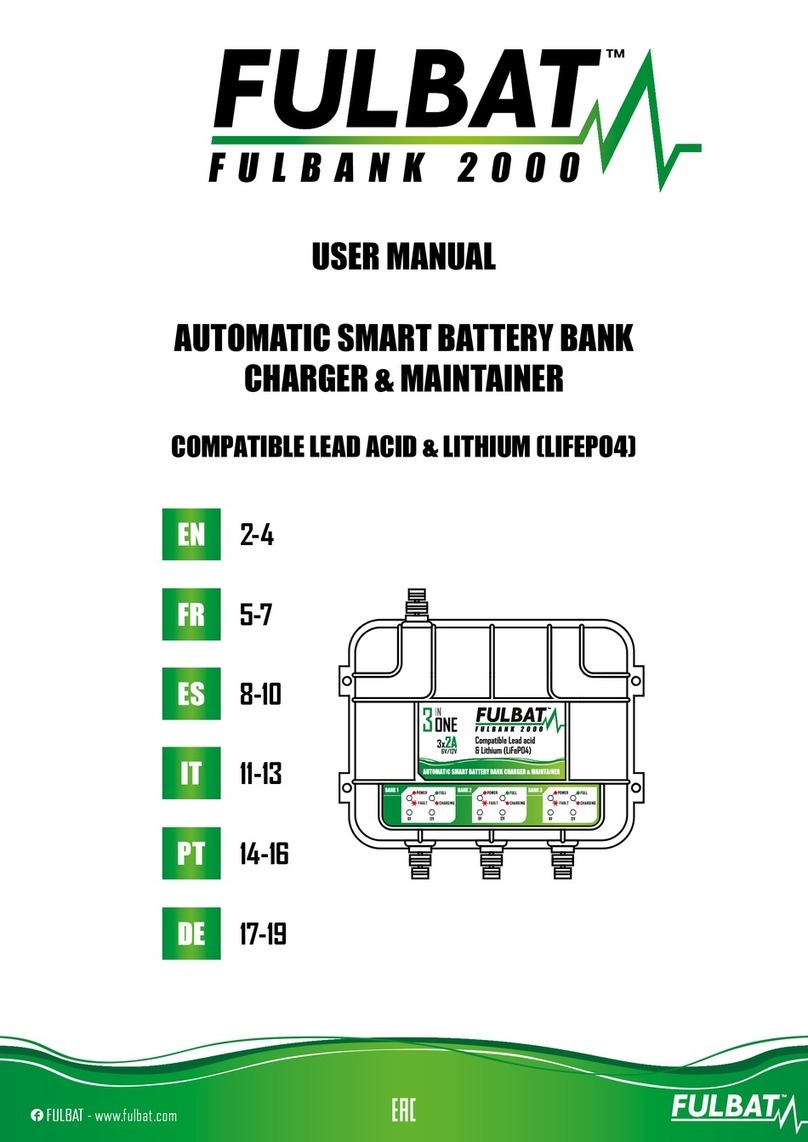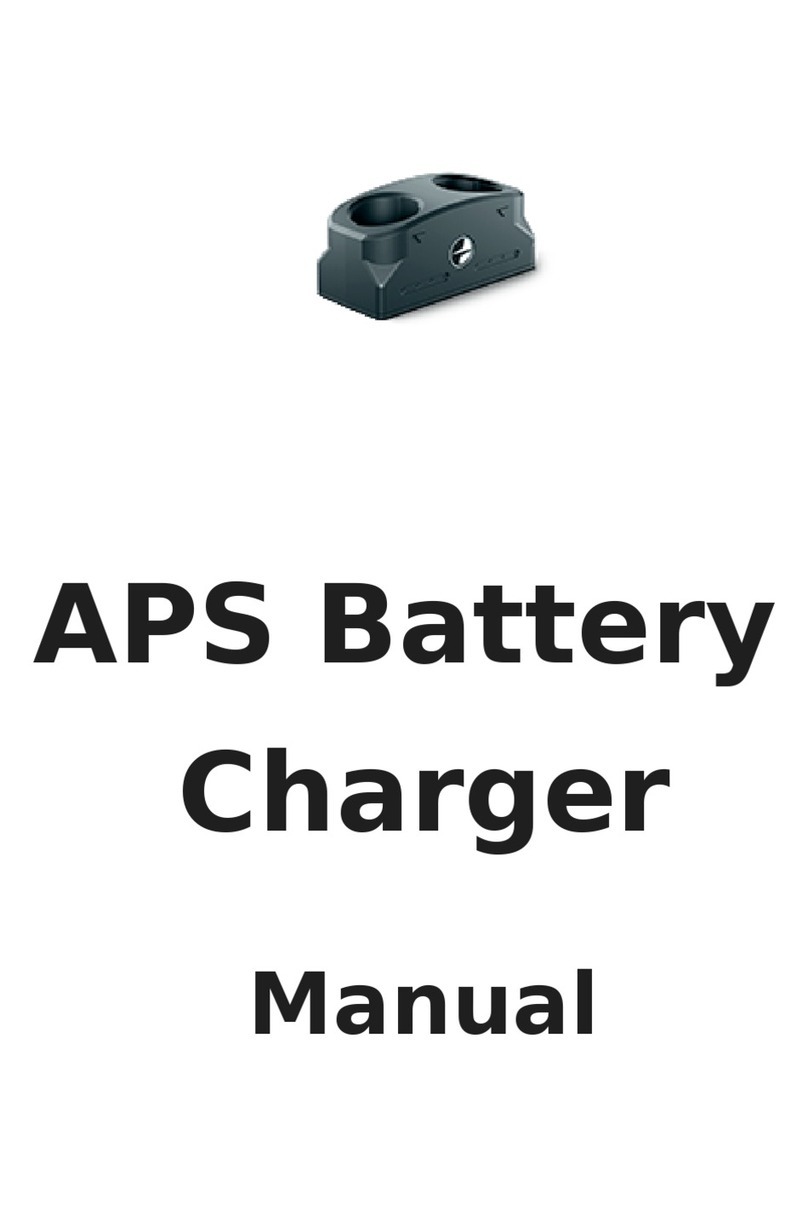Signet HB750-24 User manual

HB750-24 MANUAL
vER I 0 0611
User's Manual
Automatic Switching-Mode Battery Charger
H8750 - 24
IMPORTANT
Read, understand, and follow these safety rules and operating instructions before
using this battery charger. Only authorized and trained service personnel shall be
permitted to operate or perform any maintenance or service. This manual should
be considered a permanent part of your machine and should remain with the
machine at all times. Thb manual is a suppbment to the manualsand information
provided by SIGNET SYSTEM. lf you have any questions call SIGNET service.
CONTENTS
Page
Safety--- 2
6
II
11
12
Operatio
Maintenan
Troubleshooting----
Replacing the Ghargctt
1
Specificatio

HB750-24 MANUAL
vER 1.0 0611
HB75O-24 MANUAL
vER 1.0 0611
Safety
DangeI
A
Failure to obey the safety rules and instructions in this manual will result in death
or serious injury.
Label and Safety Rules Legend
Â, DANGER lndicates the presence of a hazard that will cause death
or serious injury.
A *o*r,ro lndicates the presence of a hazard that may cause death
or serious injury.
A. CAUTION lndicates the presence of ahazard that will or may cause
serious injury or property damage.
Safety: General
o Do not operate a charger that is not working correctly. An electric
shock hazard or battery explosion hazard from overcharging may exist.
. Make sure the charger is the correct voltage and type for the battery
or battery pack to be charged. Use of an incorrect charger may result
in battery explosion and serious injury and/or property damage.
. Do not attempt to service the charger yourself unless you are a trained
service technician. The warranty is void if the charger case has been
opened. Always follow installation instructions closely.
The high voltages inside the charger are a shock hazard and can cause
serious injury or death.
. Though the charger is resistant to water and spray washing do not fully
immerse or spray wash for an extended (more the 5 seconds in one
position) time. Liquid can get inside charger and may cause serious
injury or death.
. The charger is designed for use in industrial areas. lt is not designed
to be used in medical (hospital) environments where interference with
life critical equipment could cause death or serious injury.
. There could be a spark during charging. Be careful when using fuels,
solvents or other flammables near the charger or batteries.
An explosion could result causing death or serious injury.
¡ This charger is intended only for use on DYNO EUROPE equipment
and batteries installed on that equipment.
Use on other batteries may result in overcharging and battery explosion
causing serious injury or death.
3
2

HB750-24 MANUAL
vER 1.0 0611
Safety: Power
. To reduce the risk of an electric shock, connect only to a properly
grounded single phase (3wire) outlet.
. Ensure that the AC voltage supplied to the charger is within the ranges
in thálspecification table. Voltages outside this range, particularly high
voltages, can result in an electric shock and fire hazard.
. lf you use an extension power cable with your charger, ensure the total
current draw of the items plugged into the extension power cable do no
exceed the current rating of the extension cable and meet all national
and local electrical code requirements. See Specifications page for
current draw of charger. Overloaded extension cords can catch fire
and cause property damage, serious injury or death.
. Do not operate charger if wiring is damaged including cut insulation
or pinched wires. An electric shock could cause serious injury, or death
Safety: Batteries
. See battery suppliers guide for proper care of batterþs and follow directions
carefully. Failure to follow battery care instructions can result in battery
explosion and property damage, severe injury, or death during charging.
o When attaching charger leads to battery terminals be careful that tools do
not short between battery terminals. Shorting between battery terminals
may cause extreme arcing resulting in explosion or extreme heat that can
cause burns.
. Do not disconnect charger terminals while batteries are charging.
Sparking can occur which could ignite flammable battery gases and
cause an explosion. Always turn the charger off first (unplug from AC).
. Do not touch battery ternúnals or any exposed electrical parts. Contact with
terminals or other exposed electrical parts may cause an electric shock.
Remove watches, rings, and jewelry to avoid arcing and electric shock.
HB750-24 MANUAL
vER I 0 06ll
lnitial Installation
Only trained technicians with knowledge of the equipment and batteries the
charger will be used with should install the charger.
Ensure that the charger is the correct type and voltage for the battery pack
to be charged. This charger is only to be used with lead acid type flooded
or Absorbed Glass Mat (AGM) type batteries only.
^
A g¡U1¡9¡: Use of an incorrect charger for the type of battery or battery voltage can
result in battery explosion and serious injury and property damaqe.
Determine if the batteries to be charged are flooded or Absorbed Glass Mat
(AGM) lead acid type. For AGM type batteries the yellow wire loop at the
back of the charger should be cut and the wire ends taped.
This selects the charging profile for the AGM type batteries
Wire the output (separate red and black wires) of the charger to the battery.
For on-board or other installations the charger can remain permanently
connected to the battery. Connect the red wire to the POSITIVE (POS, P, +)
terminal of the battery. Connect the black wire to the NEGATIVE (NEG, N, -)
terminal. Ensure that any terminals used are capable of carrying 25 amperes,
that all crimp connections are good, and that the connections are clean and tight.
lf the equipment requires use of an interlock connect the black and white wires
as necessary. The wires connect to relay contacts inside the charger that are
open when the charger is on and closed when the charger is off.
The wires are not polarity (+ or -) sensitive.
45

HB750-24 MANUAL
vER 1.0 0611
Operation
^
¡I g¡U1¡9¡: To reduce the risk of fire, use this charger only on AG circuits and extension
cords capable of handling the AC lnput currents (Max. Amps) defined ín the electrical
specifications. Use must be in accordance with all National and Local Electrical Codes for
the location of use. Overloaded cords or circuits present a fire and shock hazard and may
result in propertv damage, serious iniury, or death.
1) Plug the charger into a single phase AC socket with a nominal voltage rating of
100V, 110V, 115V, 12OV,220V,230V, or 240V and a frequency rating of50 or
60H2. The charger automatically senses and adjusts to the AC voltage and
frequency.
2) The charger will flash the LEDs in a start-up check then start charging the
batteries.
The "GEL" LED on thefront panel identifies the charge profile for he battery type.
lf the lamp is off, the charger is operabd in the charging profile for normal flooded
lead acid batteries. lf the GEL LED is on, the charger operates a charging profile
for sealed gel (AGM) type lead acid batteries.
3) The three green LED's indicate the charging progress. When the battery is 0 to
50% charged the 50% LED flashes. When the battery is between 50 to 75%
charged the 50% LED is on while the 75o/o LED flashes. When the battery is
between 75lo 100o/o charged the 75o/o LED is on and the 100% LED flashes.
When the battery is fully charged the 50%, 75o/o and 100% LEDs are on.
Charging time is dependent on depth of battery discharge, battery condition,
and temperature.
4) lf the charger is left plugged in after charging is complete (all LEDs on) the
charger goes into maintenance mode to keep batteries charged while in storage.
The charger continuously measures battery voltage and restarts the charging
-6-
HB750-24 MANUAL
vER 1 0 0611
cycle if the battery voltage drops below about 25V. This keeps batteries charged
while in storage but does not boil-out the electrolyte over time.
5) Turn-off charger by unplugging (disconnect from AC voltage).
Gharqinq State & LED Displav
Note: X in the table means "don't care", LED may be off, blinking, or on
Technical Operation Summary - The charger is an advanced, microprocessor
controlled, high frequency switching type charger. From 0o/o lo 75% a constant
current is provided to the battery (bulk charging) until a pre-set battery voltage is
reached. FromTSo/o to 100% a constant voltage is maintained and the charging
current decreases (absorption charging). When the charging current falls below
2 to 3A charging is complete. The charging curve is temperature compensated
using the starting temperature of the charger as the battery temperature. The
charger will work even with batteries in a severe discharge state with terminal
voltages as low as 2V and there is no need to'boost charge" weak batteries
before charging. The charger has an 18 hour timer in case charging can not be
completed due to battery problems - see troubleshooting section. The charger
senses and flashes error codes for problems - see troubleshooting section.
7
A
Il *o*,.llne : There could be a spark during charging. Be careful when using fuels,
solvents or other flammables near the charger or batteries. An explosion may result causing
serious iniurv or death.
^
A WARNING: To reduce the risk of an electric shock, connect only to a properly
grounded single phase (3wire) outlet. Electric shock hazard may cause serious injury or
death.
50% 75% 100% GEL
LED
Charqinq State
0 to 50% charged Blinking off off X
50%to75% charged On Blinking off X
75%to 100% charged On On Blinking X
100% charged On On On X
Charge for flooded type
batteries X X Xoff
Charge for Sealed type
batteries X X XOn
See Troubleshooting off off Blinking X

Maintenance
^
A *o*","U: Disconnect from AC voltage before do¡ng any service. When plugged-in
the AG wiring is an electric shock hazard. Disconnecting the DC output wires near the
batteries wt¡en the charger is ON may cause the batteries to explode resulting in serious
injury or deiáth.
A
A *o*r,"o: Risk of an electric shock caus¡ng serious injury or death. Do not touch
un-insulated parts of the charger wires, battery connector or battery terminals. Be careful
with tools as shock or arc¡ng from shorting of electrical parts may cause serious injury or
death. Remove rings, watches, and jewelry to avoid arcing and electric shock.
1) All electrical connections must be kept clean and tight. Sometimes
connections can look good outside but be corroded inside causing
an output connection error (one flash failure, see troubleshooting).
2) The charger cools through the case fins. lf the fins become covered
with debris the charger's over-temperature protection system may
reduce charging power. Clean-off fins to improve cooling.
3) Replace the charger if case damage breaks the water-tight seal.
4) lnspect wiring weekly, including AC plug, AC cord, DC wires to battery,
and interlock wires for cut insulation, pinching, or other damage.
Repair to avoid electric shock.
AC Ground - green with yellow stripe
AC Neutral- light blue
AC Line (Hot)- brown
DC Battery Negative (-) - black
DC Battery Positive (+) - red
5) Follow battery supplier recommendations for battery care and maintenance.
Note - most battery charging problems relate to battery care and not
charger problems.
HB750-24 MANUAL
vER t.0 0611
Troubleshooting
AWARNING: Do not operate the charger if it is malfunctioning. Personal injury or
property damage could result. Electric shock hazard may cause serious injury or death.
AWARNING: Do not d¡sassemble the charger. High voltages inside the charger are an
electric shock hazard and may result in serious injury or death.
ldentify the problem from the following list and refer to the appropriate section
for detailed instructions.
1. CHARGER DOES NOTTURN ON.
2. 3 LED's BLINK SIMULTANEOUSLY
3. 1OO% LED BLINKS WHILE 50% AND 75% LED'S ARE ''OFF"
4, BATTERIES DO NOT FULLY CHARGE
5. THE AC SUPPLY CIRCUIT BREAKER OR FUSE IS BLOWN
1. CHARGER DOES NOT TURN ON.
Double check the outlet to ensure it is working by trying out another known good
piece of equipment on the outlet. Check the AC plug and wire to ensure both are
in good condition. Replace charger if everything else is correct.
^
A"OUÏO", lf the AC plug or receptacle is broken, twisted, bent or loose, ¡t cannot make
a good electrical connection and an electric shock hazard may exist. Have ¡t repa¡red or
replaced by a qualified person immediately. DO NOT USE THE CHARGER UNDER THIS
CONDITION. Fire, injury or death may result if not corrected.
2. 3 LEDS BLINK SIMULTANEOUSLY
The faults identified below cause the 3 LED's to blink simultaneously and a
buzzer to sound. lf the cause of the fault is removed the charger restarts
automatically, the LEDs go into normal operational mode, and the buzzer stops.
> 3 LEDS BLINK ONCE SIMULTANEOUSLY : OUTPUT CONNECTION ERROR.
+ CHECK THE BATTERY AND CHARGER CONNECTION AND CORRECT
(The output may not be connected to the batteries or the connections to the batteries may have
corroded or loosened. The output may be shorted due to improper connection to the batteries
or pinched wires The output may be connected in reverse polarity to the batteries.
_o
H8750.24 MANUAL
vER 1.0 06'11
1
I

HB75O-24 MANUAL
vER 1.0 0611
The charger is not damaged by any of these problems.)
> 3 LEDS BLINK TWICE SIMULTANEOUSLY: AC VOLTAGE PROBLEM.
- CHECK THE AC INPUT VOLTAGE. THE CHARGER lS INDICATING THE AC VOLTAGE
IS TOO LOW OR TOO HIGH.
(See the ele6trical specification table for the allowable AC voltage input ranges. This is an
unusual problem and would most likely occur with a very poorly regulated engine-generator set
providing the AC voltage to the charger)
> 3 LEDS BLINK THREE TIMES SIMULTANEOUSLY : CHARGER IS OVERHEATED.
- NO ACTION REQUIRED. WHEN THE CHARGER COOLS, CHARGING WILL
RE-STARTAUTOMATICALLY. CHECK AND CORRECT FOR DIRT OR OTHER DEBRIS
ON CHARGER THAT MAY BE REDUCING COOLING.
> 3 LEDS BLINK FOUR TIMES SIMULTANEOUSLY : INPUT OR OUTPUT OVER
CURRENT.
- NO ACTION REQUIRED, CHARGER WILL CORRECT AND RE-START
AUTOMATICALLY.
3. 1OO% LED BLINKS WHILE 50% AND 75% LED'S ARE "OFF"
The 18 hour timer has elapsed or a bad cell in the battery ha s been detected.
Causes:
- BATTERIES ARE EXTREMELY DISCHARGED. UNPLUG AND THEN PLUG-IN
CHARGER TO RE-START CHARGE CYCLE TO COMPLETE CHARGING.
- BATTERIES ARE WEAK, OLD, OR HAVE ONE OR MORE BAD CELLS. BATTERIES
WILL STILL CHARGE BUT CAPACITY WILL BE REDUCED. REPLACE BATTERIES.
- BATTERY PACK TOO LARGE FOR THE CHARGER. USE HIGHER OUTPUT CHARGER
OR UN-PLUG, WAIT 20 SECONDS, THEN PLUG-IN CHARGER TO RE-START CHARGE
CYCLE TO COMPLETE CHARGING.
4. BATTERIES DO NOT FULLY CHARGE
lf the batteries are charged overni ght, make sure the AC sup ply is n ot being
switched-off at night with other building circuits. Check battery condition following
the battery supplier's instructions. C heck for dead cell s or reduced capacity.
Replace charger only if other problems are not found.
HB75O-24 MANUAL
vER 1.0 0611
5. THE AC LINE CIRCUIT BREAKER OR FUSE IS BLOWN
An overloaded AC circuit, defective circuit breaker, defective fuse, or a charger
problem can cause this condition. First check to see what the total load is on the
AC circuit to avoid overload. lf total AC load is OK connect the charger to a
different AC outlet (on a different circuit) in the building. lf the charger operates
properly on other AC outlets, a qualified person should correct the AC circuit
problem. lf the AC supply checks good, the charger should be replaced.
Note: Over 112 oÍ all battery chargers returned as "failed" are good. Please follow the
troubleshooting procedures carefully and check all other items before returning the
charger as failed.
Replacing the Charger
^
¡l *O*r,"O: Disconnect from Ac voltage before do¡ng any service. When plugged-in
the AC wiring is an electric shock hazard. Disconnecting the DG output wires near the
batteries when the charger is ON may cause arcing and the batteries to explode resulting in
serious injury or death.
Å
agent
shock
WARNING: Do not disassemble the charger. Take it to a factory-authorized service
when service or repair is required. High voltages inside the charger are an electric
hazard and can result in serious iniurv or death.
A
Il *O*nU.lC: Risk of an electric shock causing ser¡ous injury or death. Do not touch
un-insulatedpartsofthechargerwires,batteryconnectororbatteryterminals. Becareful
with tools as shock or arc¡ng from shorting of electrical parts can cause serious injury or
death. Remove rings, watches, and jewelry to avoid arcing and electric shock.
Replace only with charger designed for use with the batteries and machine to
ensure compatibility with all machine systems. Make sure the charger is
unplugged before replacing and be careful tools do not short battery connections
which can cause electric sparks. Ensure connections are the same as the
original charger with wires connected by a qualified person (see tag on AC cord):
AC Ground - green with yellow stripe
AC Neutral - light blue - 11-
- 10-

HB750-24 MANUAL
vER 1.0 06'l'1
AC Line (Hot) - brown
DC Battery Negative (-) - black
DC Battery Positive (+) - red
lnterlock - small white wire
lnterlock - small black wire
Make sure all connections are clean and tight to provide a good electrical
connection. Check all machine operating systems after replacement to ensure
proper operation (see machine operating manual).
Specifications
Electrical Specifications
Item AC lnput DC Output
Voltage 1 1 5V (85-1 32v)
230V (170-264v)
(Automatically Selects)
Max. 31.7 VDC
(29.6V@26"C for Flooded)
(28.3V@26"C for GEL)
Max. Current 9.54 at 85V
4.84 at 170V Max. 25.0 ADC
Frequency 60/50H2
Phase SINGLE
Output Power 750 Watts
Applicable Battery Specifications: For use with 24Volt, 180 - 305 Amp-Hour,
deep cycle lead-acid Batteries - flooded or sealed gel (AGM) type
SIGNET SYSTEMS INC, .qI,
Mike Sang Choi
4061 Pacific Avenue SE Lacey,
Washinston 98503
Tel : +1 -360;556-6333
Fax: +1-360-456-8645
- 12-
Popular Batteries Charger manuals by other brands
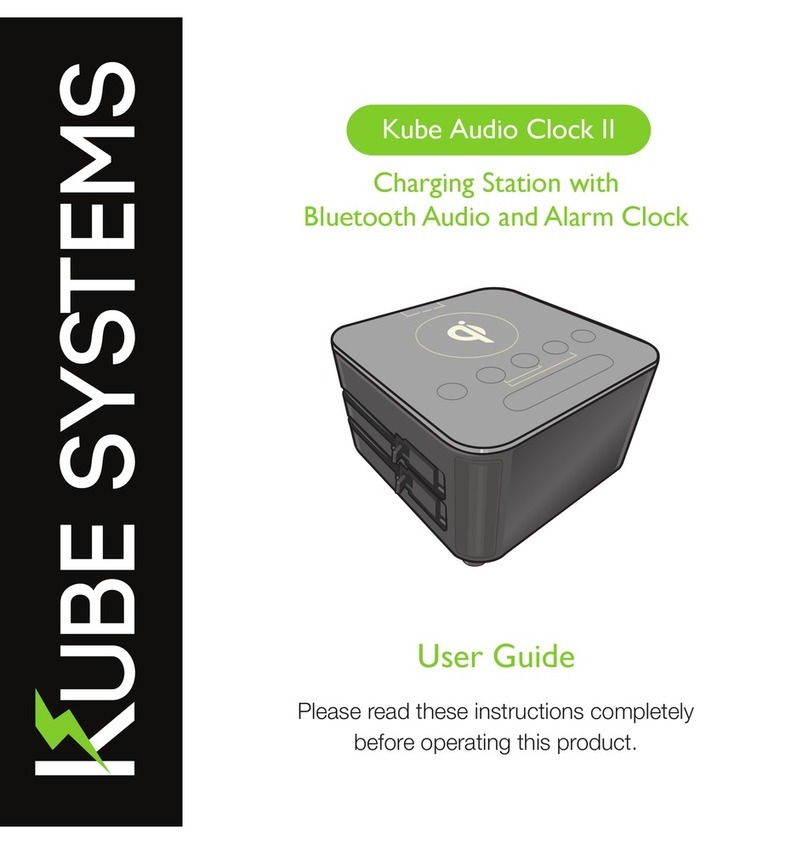
KUBE SYSTEMS
KUBE SYSTEMS Audio Clock II user guide
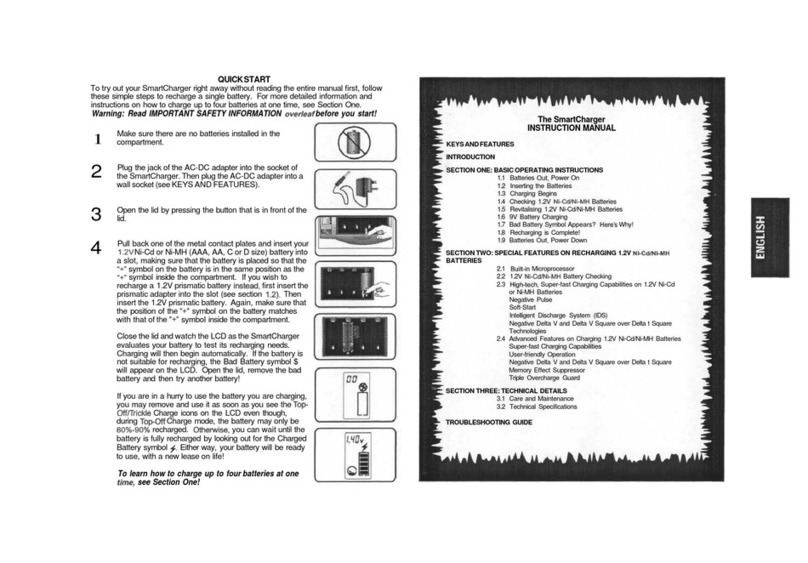
Saitek
Saitek SmartCharger instruction manual
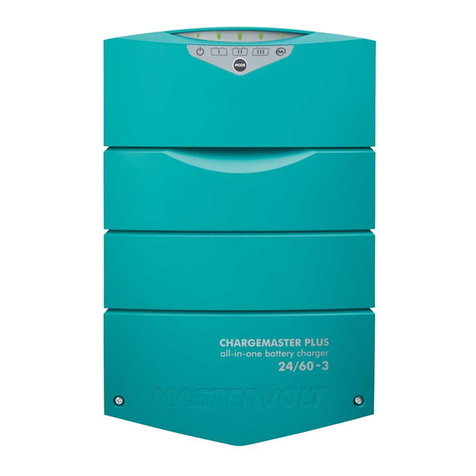
Mastervolt
Mastervolt CHARGEMASTER PLUS Series User and installation manual

Kohler
Kohler PA-320741 Operation and installation instructions
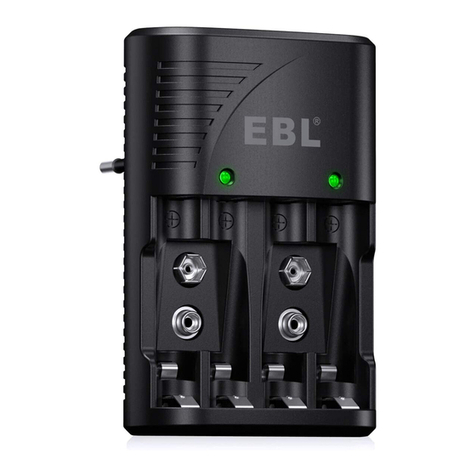
EBL
EBL EBL-C802 user guide
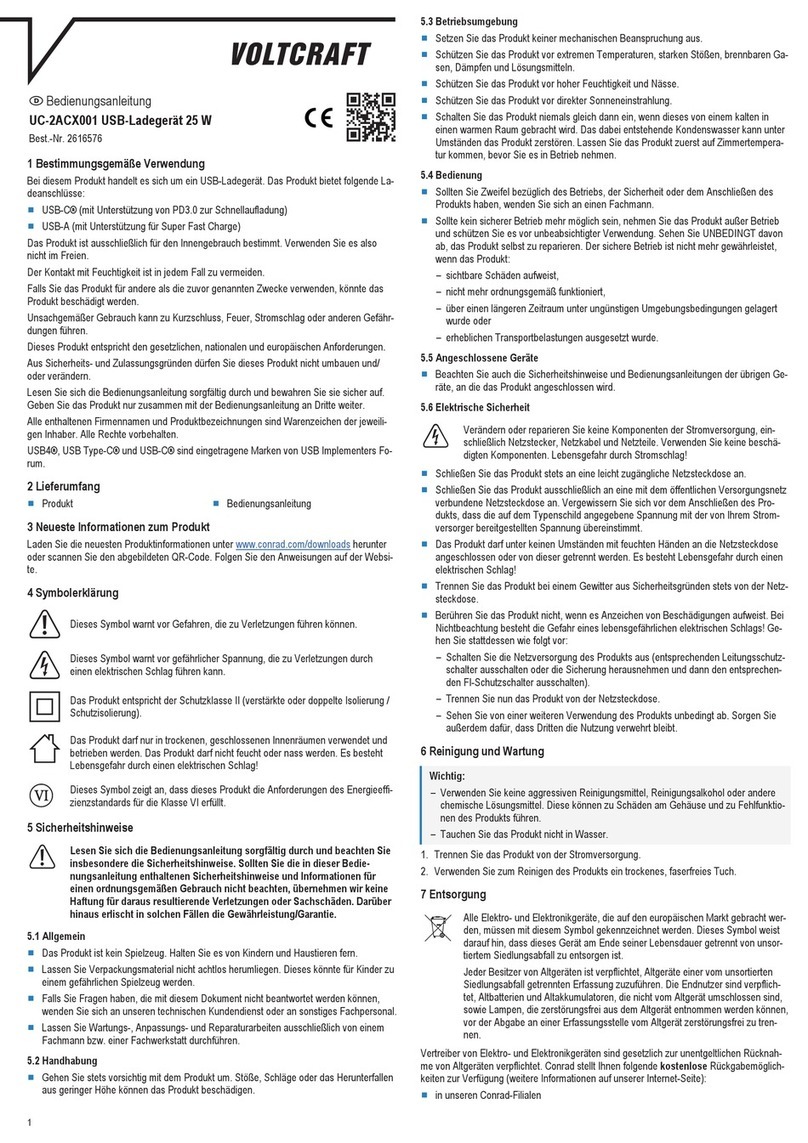
VOLTCRAFT
VOLTCRAFT UC-2ACX001 operating instructions
